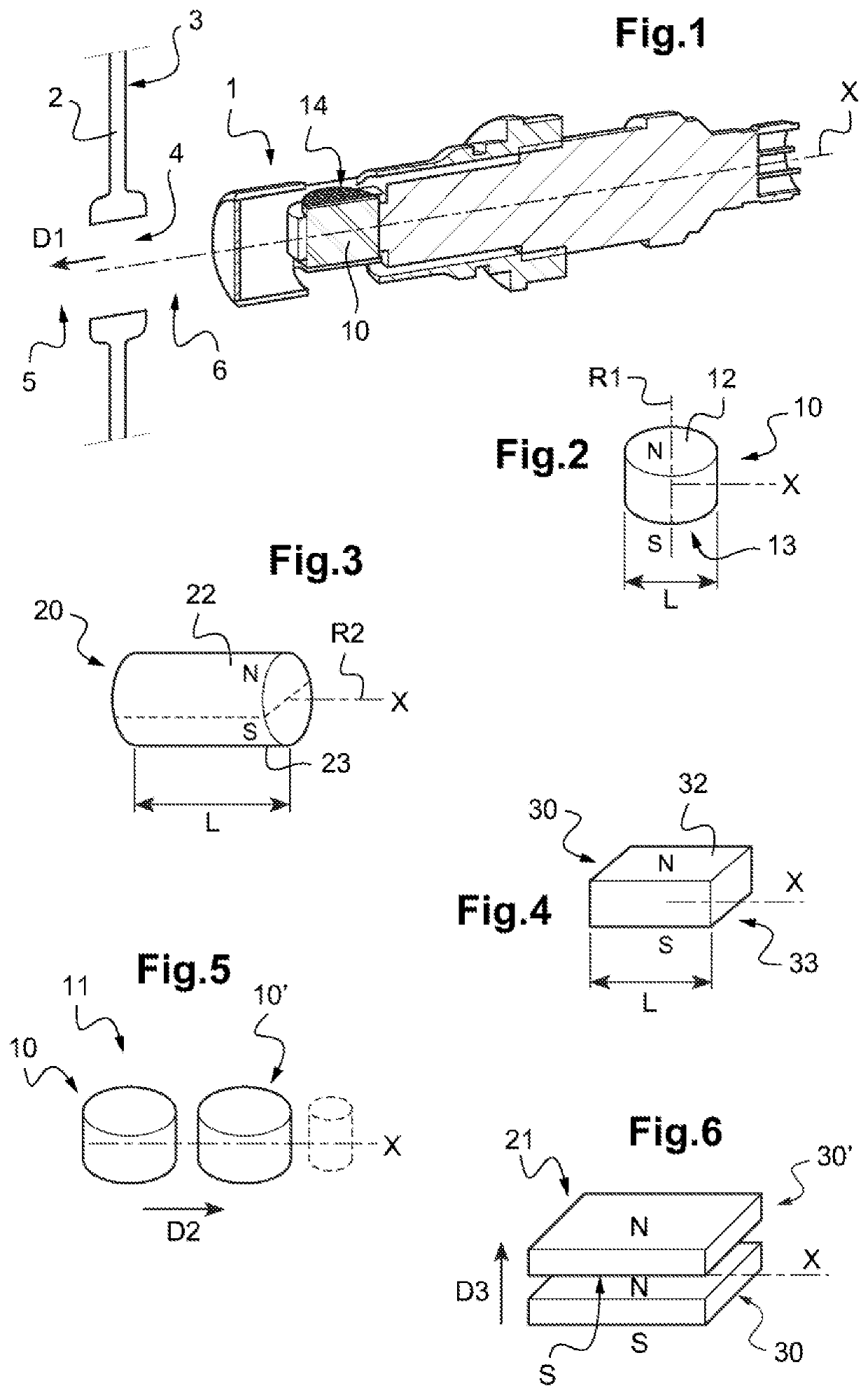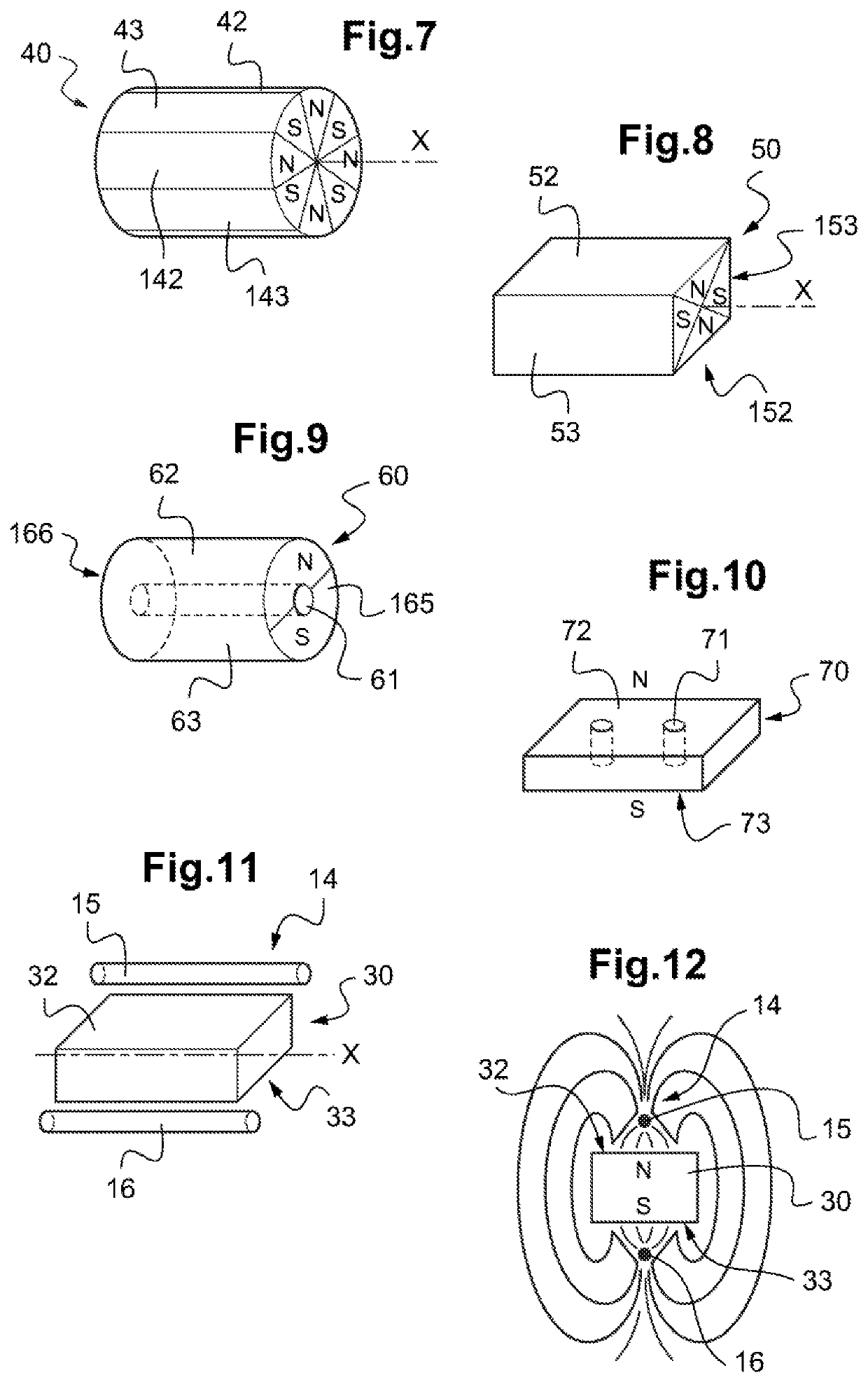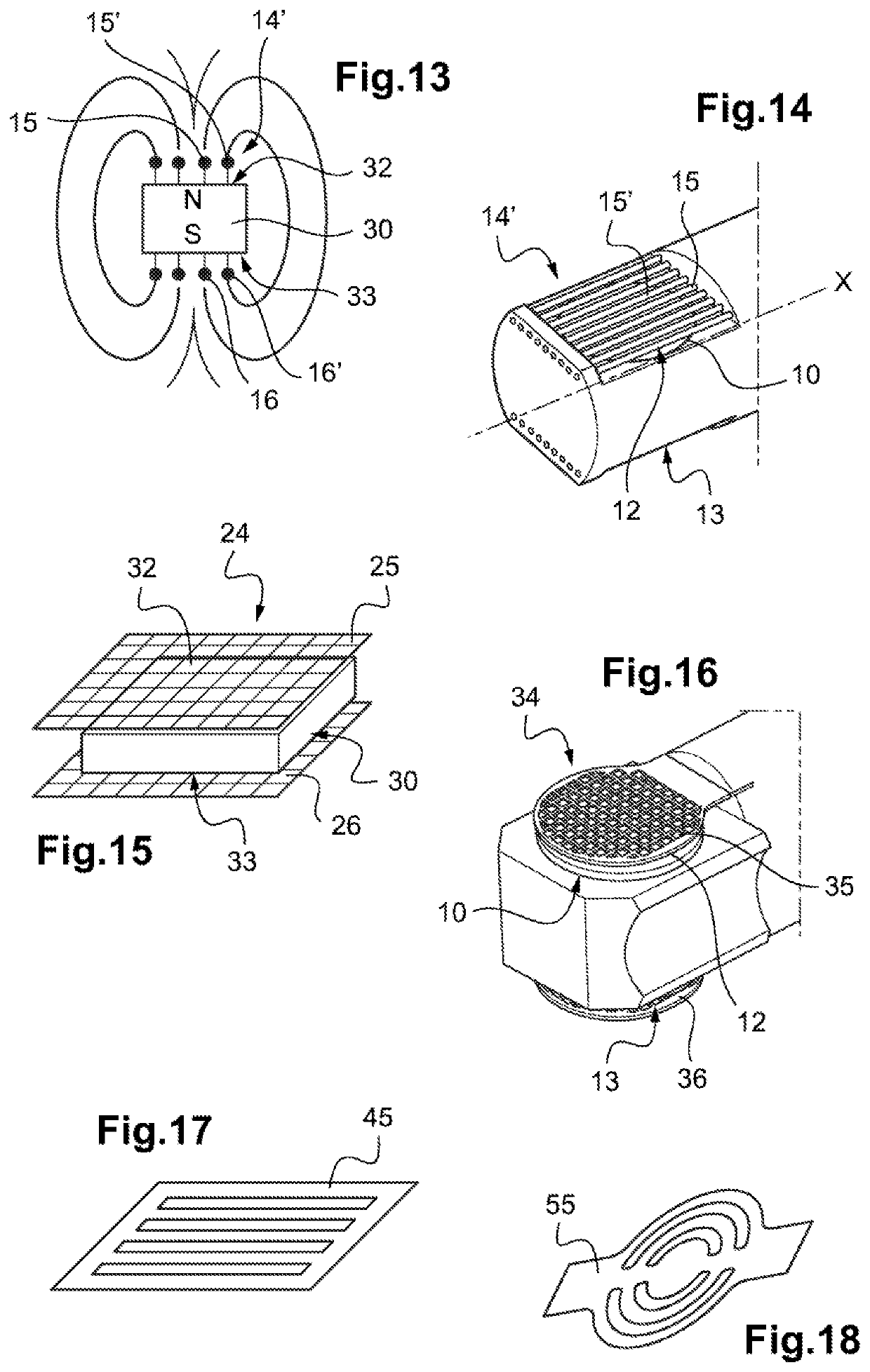Magnetic device for capturing metal wear particles in suspension in a lubrication fluid
a technology of magnetic devices and metal wear particles, which is applied in the direction of lubricant mounting/connection, machines/engines, instruments, etc., can solve the problems of limited magnetic force of attraction, large quantity of metal particles captured by such magnetic devices, and not representative of real wear of parts
- Summary
- Abstract
- Description
- Claims
- Application Information
AI Technical Summary
Benefits of technology
Problems solved by technology
Method used
Image
Examples
first embodiment
[0108]Specifically, and as shown in FIGS. 11 to 14, which correspond to the invention, the presence-detector members 14 and 14′ comprise at least two electrically conductive bars 15, 15′ and 16, 16′. Under such circumstances, a first bar 15, 15′ is then arranged facing a first pole face 12, 32 of positive polarity, and a second bar 16, 16′ is arranged facing a second pole face 13, 33 of negative polarity.
[0109]Such bars 15, 15′ and 16, 16′ may equally well be arranged parallel relative to the longitudinal axis X and they may be spaced apart by a predetermined distance respectively from the first pole face 12, 32 and from the second pole face 13, 33.
[0110]As shown in FIGS. 11 and 12, the presence-detector members 14 comprise a first bar 15 arranged facing the first pole face 32 of positive polarity, and a second bar 16 arranged facing the second pole face 33 of negative polarity.
[0111]As mentioned above, under such circumstances, the presence of metal particles is detected by the clo...
second embodiment
[0113]In the invention as shown in FIG. 15, the presence-detector member 24 for detecting metal particles comprises two groups 25 and 26 of two oriented sheets of electrically conductive wires forming e grid or an open weave textile. Also, a first group 25 is arranged facing the first pole face 32 of negative polarity, and a second group 26 is arranged facing the second pole face 33 of negative polarity.
[0114]As mentioned above, the presence of metal particles is detected by the closing of an initially-open electrical circuit between firstly one of the two groups 25 or 26 and secondly one of the two pole faces 32 or 33 of the permanent magnet 30.
third embodiment
[0115]In the invention, as shown in FIGS. 16 to 18, the presence-detector members 34 for detecting metal particles may comprise two electrically conductive perforated plates 35, 45, 55, and 36. Thus, a first place 35, 45, 55 is arranged facing the first pole face 12 of negative polarity and a second plate 36 is arranged facing a second pole face 13 of negative polarity.
[0116]As shown, the perforations in the first and second perforated plates 35, 45, 55, and 36 may present various different shapes, such as, in particular, squares, rectangles, or indeed annular portions.
PUM
| Property | Measurement | Unit |
|---|---|---|
| volume | aaaaa | aaaaa |
| polarities | aaaaa | aaaaa |
| longitudinal dimension | aaaaa | aaaaa |
Abstract
Description
Claims
Application Information
 Login to View More
Login to View More - R&D
- Intellectual Property
- Life Sciences
- Materials
- Tech Scout
- Unparalleled Data Quality
- Higher Quality Content
- 60% Fewer Hallucinations
Browse by: Latest US Patents, China's latest patents, Technical Efficacy Thesaurus, Application Domain, Technology Topic, Popular Technical Reports.
© 2025 PatSnap. All rights reserved.Legal|Privacy policy|Modern Slavery Act Transparency Statement|Sitemap|About US| Contact US: help@patsnap.com



